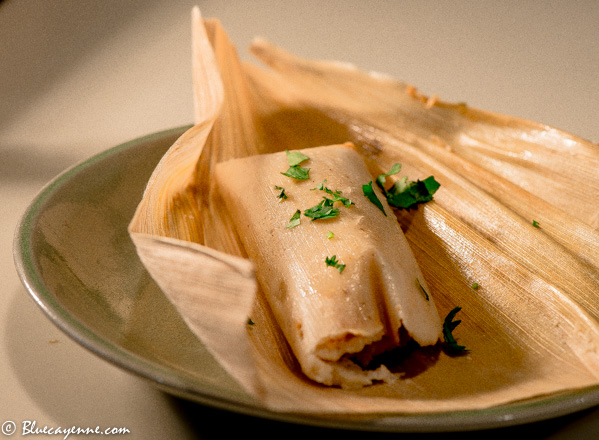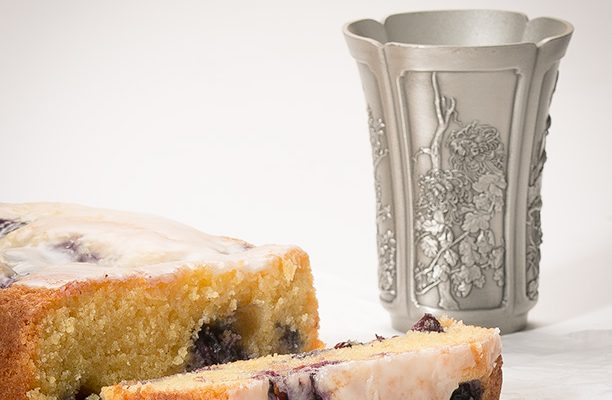Mine is a culinary bucket list and my list is extensive. So… the good news for me is that I can’t, as they say, lay down my knife and fork for a very long time.
My list, as you might suspect, is pretty eclectic–the ultimate French onion soup, appams, a crisp thin crust pizza like the one Dixon and I enjoyed many many years ago in Corfu, a masterful Napoleon pastry, the perfect naan, divinity candy, sour-perfect rye bread and on and on. Mastering the art of tamale-making has long been very near the top of my list.
I’m not the first one to obsess about tamales. According to food historians, tamales are believed to have been an ancient food obsession, one that dates back to pre-Columbian times in Mesoamerica–maybe way back to 7000 B.C. As evidence, historians have found images of tamales represented in the art of indigenous people of that region thousands of years ago. Some historians believe that the tamale was a rock star in ancient cuisine because it was a healthy and highly-portable food for warriors, hunters and travelers and because the tamale assumed an importance in religious rituals as well.
Here, for example, is a detail incorporating tamales on a vase from the late classic Mayan period. If you ask me, I think the guy on the left is telling the guy on the right to stay away from his tamales. (“One more step…”) On the other hand, the guy on the right could be an ancient bad-boy food critic delivering a withering criticism of the tamales–a Mayan “Nasty Bits” Anthony Bourdain. What do you think?
Until recently, making a credible tamale has seemed out of the range of possibility for me.
Trust me. It is not like I hadn’t tried. I had the corn husks. I had the enormous tamale steamer. While others binge-watched How I Met Your Mother, I binge-watched How to Make Tamales videos on You Tube–even several in Spanish which I couldn’t understand but I wanted to watch the technique.
Heaven knows, I had the will. ( My friend Sarah says I’m like a dog with a bone when I face a challenge. Maybe.)
But every time I tried to make tamales they were…ahem…mediocre.
Then I had a tamale breakthrough, an epiphany.
Sarah and I attended a tamale making class at The Sur La Table Cooking School in Costa Mesa. Ours was a very good experience and our teacher, Alex Morales, was excellent. Alex assured us that we could overcome our fear of tamale making.
After some procrastination, Sarah and I finally decided to put our tamale training into practice this week. We had a two-person tamalada, a tamale making party, in my kitchen.
We were rested. We were ready. We had TT- tamale ‘tude: Look out Huntington Beach! Two tamale divas were on the loose! (Make that three tamale divas. Juliet was very much an interested party in the whole process.)
Here is a photo of tamale diva Sarah and sweet tamale diva Juliet taken at the beginning of our tamalada.
And there it was.
¡Success!
This is a photo of Sarah’s tamales in the pot ready to steam. Are those tamales beautiful or what?
Can you do this? Definitely!
Here is our adaptation of the recipe we learned at the Sur La Table school. We divided our preparation over several days—making sauces one day, masa another and on and on.
Sarah and I took home over twenty tamales each. Now the question is how to eat them all. I just ate one for for breakfast and it was wonderful. Here is a photo of my breakfast tamale.
One check down on my bucket list.
Recipe: Tamales
Masa Preparation
6 C. masa harina
1 1/2 t. sea salt
3 t. baking powder
1 C. vegetable shortening (at room temperature)
1 C. unsalted butter (at room temperature)
3 C. vegetable broth (plus more if needed)
Directions:
Whip room temperature shortening and butter in your mixer at a high speed for approximately two minutes until it is fluffy. Set aside. (Traditionally, tamales were made with lard. We found that the vegetable shortening and butter combination was a fine substitute for the lard.)
Measure masa harina, salt and baking powder into a large bowl. Whisk to be sure the salt and baking power are well mixed into the masa harina.
Add the masa harina mixture to the beaten shortening one cup at a time, alternating with broth. Your mixer should be set on medium (or slower) speed when you do this to avoid splattering your kitchen with bits of masa. When you have mixed all the masa harina mixture and all of the broth into the fats, increase the mixer speed to medium high and continue to whip the mixture until it resembles the consistency of a soft but workable dough. This will take about 3 minutes. If your dough is too dry, you can add more broth (1/4 C. at a time) until you get the right consistency. (We didn’t need to add any extra broth.)
The traditional test for the readiness of your masa is to drop a ball of the dough into a glass of cold water. If the masa ball floats, your masa is ready. If your masa doesn’t float in the glass of water, you will need to beat it more to get more air into the mixture.
Filling Recipe (Your choice of ingredients. Here are some suggestions.)
Grated cheddar cheese
Grated Monterey jack cheese
Grated Cotija Cheese
Strips of Meunster Cheese
Strips of Oaxaca Cheese
Roasted chiles (peeled and deseeded)
Roasted red peppers
Directions:
Above are suggestions for the filling. For the most part, we used slices of chiles (both canned green chiles and oven-roasted and peeled poblano and Anaheim chiles), cheese and a spoonful of sauce as a filling for our chile cheese tamales.
Corn Husks (rinsed and soaked in hot water)
Rinse husks and cover in hot water for an hour. When you are ready to make your tamales, pat husks dry before spreading with masa.
Red Sauce Recipe
1 Quart water
12 dried guajillo chiles (stems and seeds removed)
4 T. vegetable oil (divided)
2 t. cumin seeds
1 t. coriander seeds
1 large yellow onion (peeled and coarsely chopped)
4 medium garlic cloves (peeled and smashed)
1 can (14 ounce) fire roasted tomatoes (drained)
1 C. low-sodium chicken or vegetable broth (plus more as needed)
1 T. firmly packed light brown sugar
1 C. canned pineapple chunks (drained)
Sea salt and freshly ground black pepper to taste.
Directions:
Heat water in a medium saucepan until boiling. Stir prepared chiles into the boiling water. Take the pan off the heat and allow the chiles to soften in the hot water. This will take about 30 minutes. Drain and reserve 2 cups of the soaking water.
Heat 2 T. oil in a large heavy saucepan over medium heat.When the oil is hot, add cumin and coriander seeds and toast the seeds until they are fragrant for about one minute. Watch the pan carefully. You don’t want burned seeds. Put onions and garlic into the pan with the seeds and saute until the onion is softened. This will take about 5 minutes.
Put the onion-garlic-seed mixture into a blender along with the softened chiles. Puree until smooth, using the reserved chile water to thin the mixture.
On medium heat, add the remaining 2 T. oil to the saucepan. Add the chile mixture from the blender. Add tomatoes and enough stock to give the sauce a thick, pourable consistency. Add brown sugar and pineapple and salt and pepper to taste. Simmer this mixture for 6 to 8 minutes.
Put the mixture back in the blender and puree until the sauce is smooth. Alternatively, use an immersion blender in the pan.
Adjust seasonings and use the sauce in the filling for your tamales and over the cooked tamales when they are served.
Assembling the tamale:
Take a soaked corn husk out of the soaking water. Pat it dry and remove any corn silk that might be sticking to the husk. Lay the husk flat on your counter with the rough side down and wide end of the husk nearest to you. Spread about 1/3 cup of your prepared masa on the corn husk. You can use a spatula, your fingers, the back of a spoon or a masa spreader for this step. Top the masa with 2 or 3 tablespoons of filling. Fold the corn husk so that the two long sides of the husk are folded towards the middle. Once you have made that fold, fold the narrow end of the husk up over the filled section. You can use a bit of kitchen twine to tie your tamale packet together, although that is not necessary. (See the video link below for a good view of how this is done.)
Put your filled tamale packets in a steamer over about two inches of boiling water. Your pot should have a steamer insert (rack) that keeps the tamales above the water as they steam. The tamales should be loosely stacked in the steamer with the open ends of the tamales facing up (You don’t want the filling to run out of the tamale as you steam it!). Steam for an hour, checking occasionally to be sure that you still have water in our steamer. If you don’t, add water. After an hour, take a tamale out of the steamer and check it for doneness. If the tamale is done the masa will pull away from the sides of the husk. If your tamale is not done, return it to the steamer with the other tamales and continue steaming until the masa does pull away from the sides (about 30 minutes more, usually).
Here is a video link I like. I enjoyed this lady’s enthusiasm for her tamales and she does a good job of showing you how to assemble and fold them.







10 thoughts on “¡Tamales!”